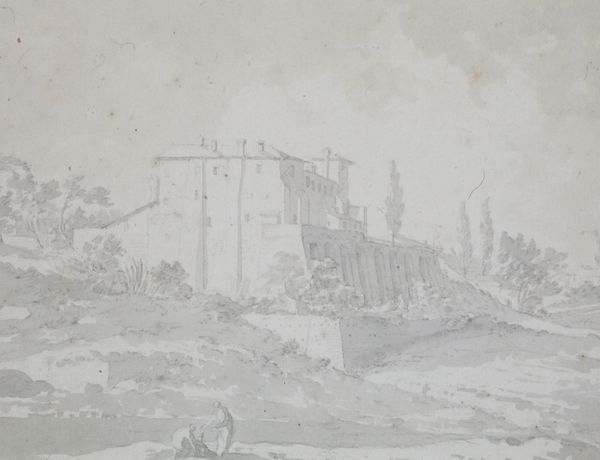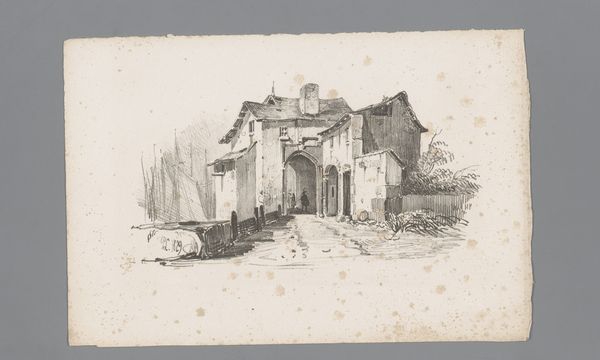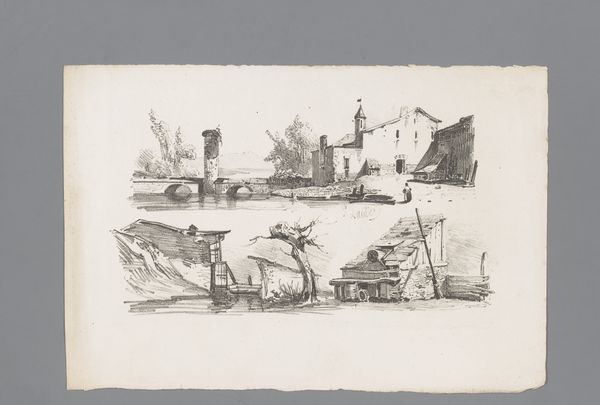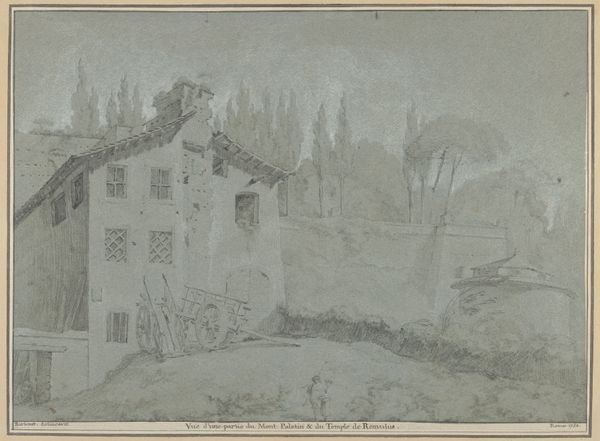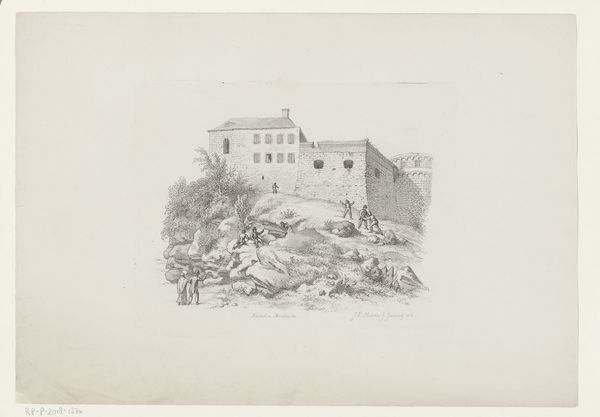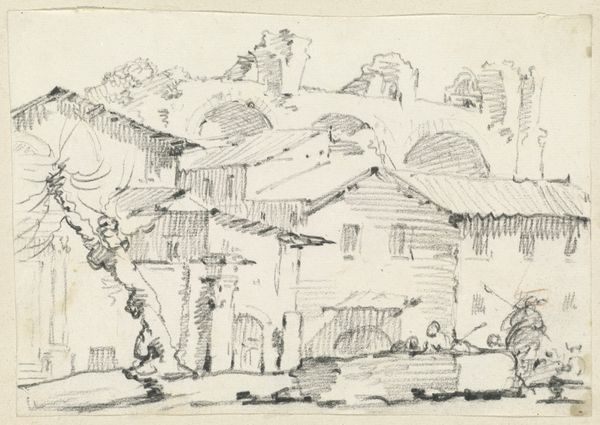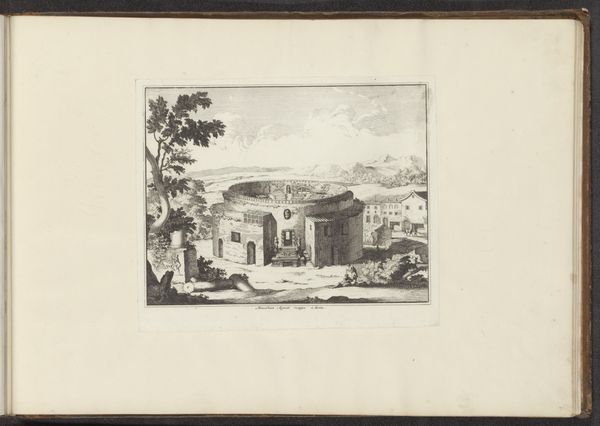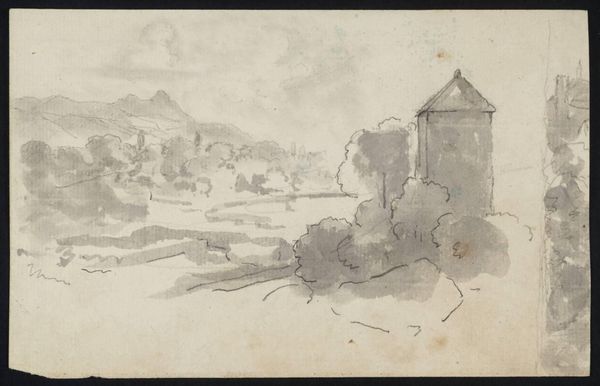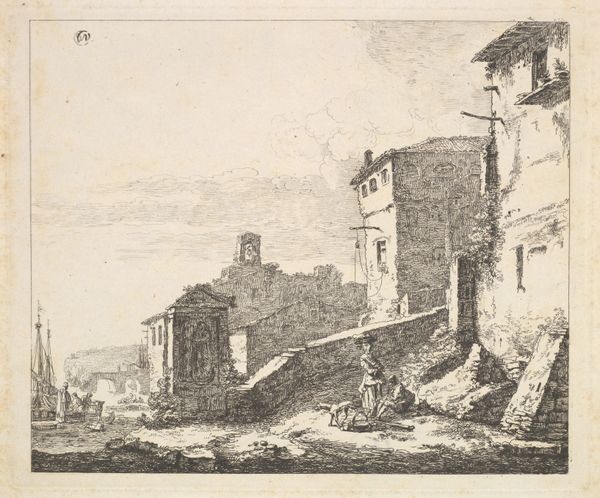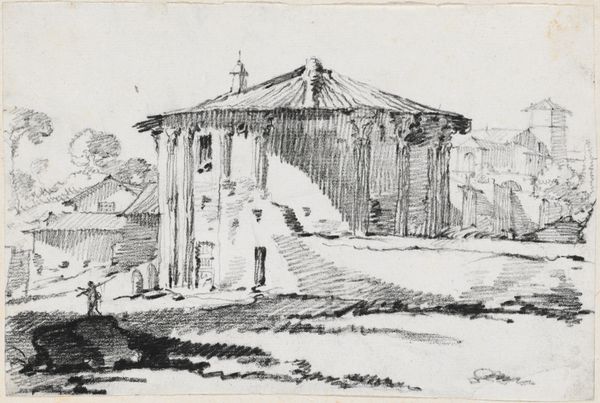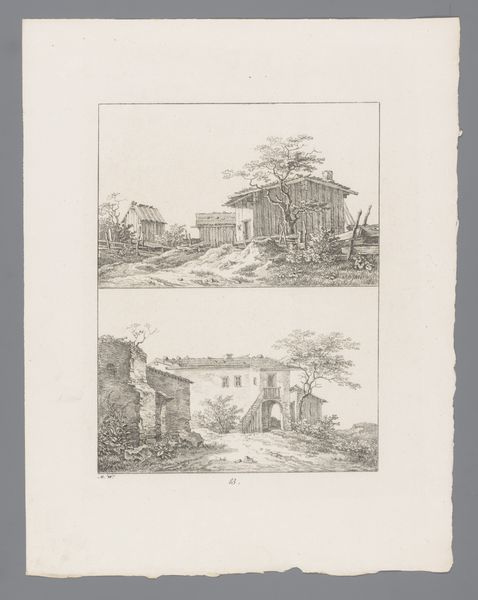
drawing, paper, pencil
#
drawing
#
dutch-golden-age
#
paper
#
coloured pencil
#
pencil
#
cityscape
#
genre-painting
Dimensions: height 148 mm, width 196 mm
Copyright: Rijks Museum: Open Domain
Curator: Look at this intriguing cityscape from 1662 by Esaias Boursse, titled "People in an urban neighbourhood," a pencil and colored pencil drawing on paper. What are your first impressions? Editor: There's an almost haunting quality. The monochrome palette lends a feeling of distance. And is that an Indigenous settlement in the distance? I wonder about the colonial undertones here. Curator: Interesting point, the scene, sketched by the Dutch Golden Age artist, is an intimate, eye-level view of a small urban community with inhabitants going about their business near simply constructed houses. Considering the period, how does this imagery speak to a Dutch understanding of its burgeoning global footprint? Editor: Immediately, one questions whose gaze is prioritized in this rendering. Dutch Golden Age art had an obsession with “discovery” narratives and depicting newfound "exotic" locations, and although its informal approach seems egalitarian, the power dynamics inherent in trade and colonialism certainly warrant discussion here, who is omitted, silenced? What labor is the scene built upon? Curator: Absolutely. There's the picturesque, almost ethnographic quality. I would observe the detail used on rendering of figures in the town; from this we may extract valuable data to inform understandings of that specific place and population, yet one must always remember such images should be treated critically. It is, undeniably, a staged construction. Editor: The casual nature of this 'snapshot', if we may call it so, works to veil very complex relations, even exploitation. One has to wonder how this 'ordinary' vision was consumed and weaponized back in the Netherlands. Curator: The work certainly prompts reflection on Dutch global presence, wouldn't you say? Editor: Yes, it really underscores how crucial it is to deconstruct images, especially those presenting themselves as just an innocent slice of life. This really offers a rich, complex case study to probe beyond face value and think of colonial power as seen in urban design. Curator: Indeed. It provides a critical lens through which to examine cultural narratives and power dynamics that endure in how art both reflects and perpetuates socio-political paradigms.
Comments
No comments
Be the first to comment and join the conversation on the ultimate creative platform.

